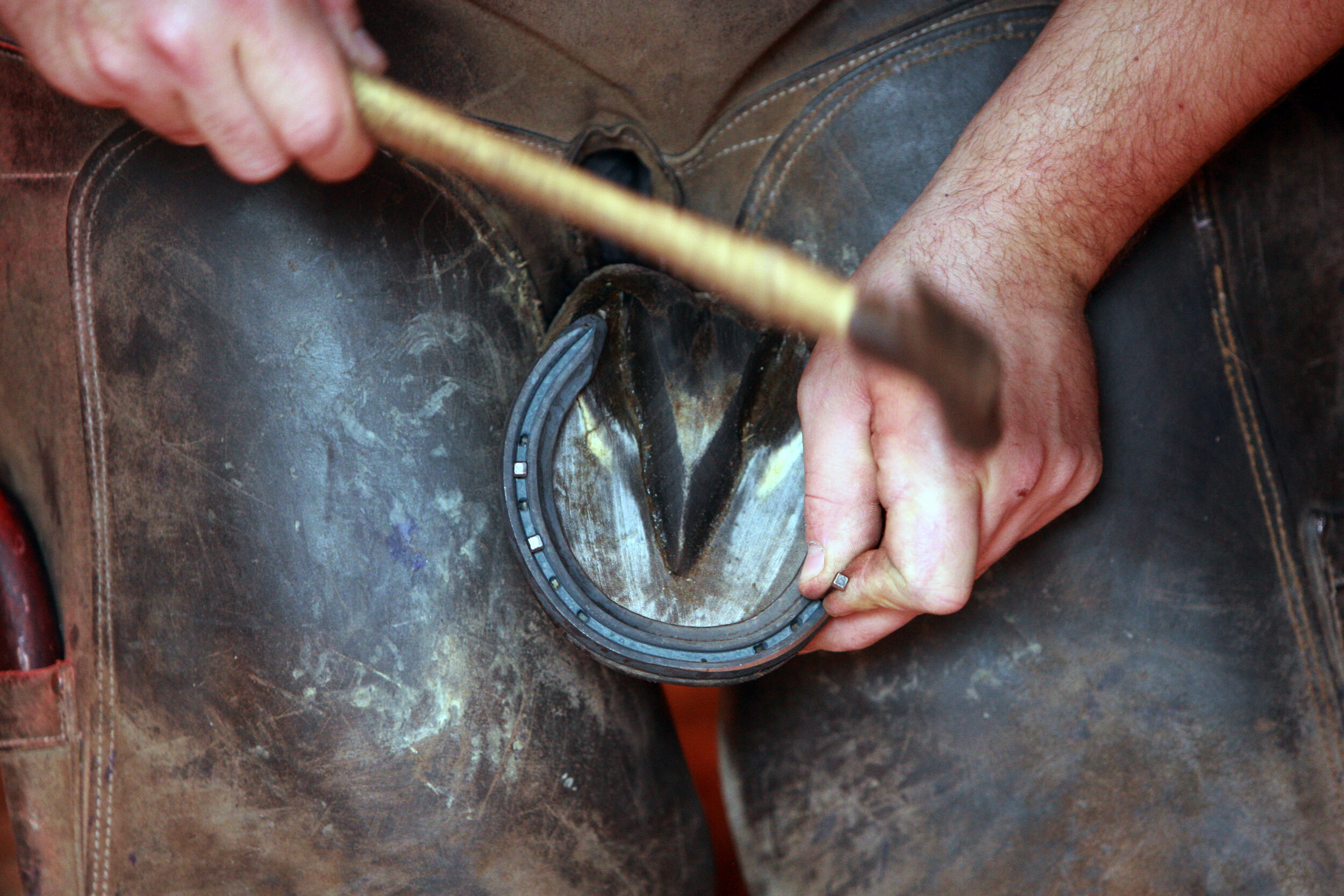The rolled toe shoe - Its dynamic effect on the front foot of the horse
By Peter N Baker
The 1980s saw a great leap forwards in farriery awareness and an increased understanding of balance and anatomy. Balance as it is thought of today was not considered in any depth in the 80s. The forces that are transmitted through, around and into the equine foot were only then beginning to be thought about. Little attempt had been made to write or talk about them.
Some years ago, an ongoing study was undertaken of the effect of the rolled toe upon the structure of the equine athlete's foot. Some quite interesting observations were noted and supported by Duckett (Newmarket 2nd International Farriery and Lameness seminar, 15 - 16 September 1990), although a somewhat different interpretation is placed upon their meaning.
Firstly, this study was undertaken in an attempt to find a sequel to the run forwards heel syndrome. At the time, this was a serious problem with high-performance horses.
The author changed his style of shoeing and converted 200 horses in his care to rolled toe front shoes. The response was dramatic. Within a month, the heels of 95 % of the horses’ feet stabilised, and the run forwards heel was no longer seen as a problem. Traditionally defined corns ceased to be present in 100% of the horses, acute angled bar buckles were no longer seen, and the lameness associated with this condition was no longer evident. Linear bruising of the solar junction of the bars completely disappeared and "Baileys dorsal depression" in 95% of the horses so affected went away. The horses were generally sounder, tracked up in a far straighter line, and they undoubtedly began to move more freely. Posterior third lameness became a thing of the past, except in those horses that suffered attributable physical injury, disease to their feet or those suspected of having surgical intervention in their pre-training lives.
The type of rolled toe used was the "Charlie Double" toe, as recommended and demonstrated by Colin Smith, FWCF. The roll is produced by rolling the toe of the shoe over the beck of the anvil. The toes of the first shoes used were rolled to the first toenail hole to the opposing first nail hole on the other side of the shoe. The shoes were made of wide section,
light steel and were fitted long and full at the heels. This type of shoe and toe immediately stabilised the animal’s run-forwards feet.
There were, however, four quite serious complications:
A black spot of necrotic matter formed under the shoe at the centre of the toe in the white zone.
A ridge of solar horn developed, which corresponded with the widest part of the foot. This ridge sometimes bridged the lateral clefts between the frog and the bars.
3. These observations are most probably related to the second complication, but the dorsal wall appeared to shunt backwards and two shallow grooves (Duckett's Dimples) appeared proximo/distally in the dorsal wall—one on either side of the common digital extensor tendon, starting just proximal to its insertion on the extensor process the distal phalanx.
These grooves did not seem to be formed as the horn grew downwards from the coronary band. One must conclude that they formed as a result of horn shunting.
The second and third complications are possibly linked by the fact that the dorsal wall shunts backwards. This dorsal wall shunting descends the wall only as far as the upper solar plate wall junction, as the wall below this point is held in place by the horny sole. Such action causes the distal 3/4 of an inch of the dorsal wall to turn upwards and exaggerate the
formation of the dip in the dorsal wall. The wall expands medially and laterally, and unless care is taken, this bilateral flaring will develop to a point of sole wall cavitation and wall laminae shearing. The minor posterior displacement of the sole causes the ridge and bridging effect previously indicated. It appears the horse's physiology is forming the bridge to stabilise and strengthen the solar plate in an attempt to counteract weakness.
4. Another problem is seen when using this type of shoe on horses with flattish feet, when in order to remove sufficient horn to allow the rolled toe to seat properly, the blood line can easily be breached.
As can be seen from the above, the removal of one set of problems by fitting a rolled toe shoe from first toe nail hole to first toe nail hole was immediately replaced by a second set of problems which were potentially just as injurious as the first.
Four months into the trial, the amount of toe roll used was reduced. The production method remained the same, but the amount rolled was reduced to half. Great care was taken to relieve the pressure on the sole directly behind the centre of the toe.
The complications ceased, and nothing detrimental was seen afterwards. The feet remained stable.
In 1990, a similar trial was carried out by a fellow farrier in my area, with equally dramatic results. Three of the horses in his care won two European Derbys, French and Epsom—the third horse only just got beaten into second place in the Irish Derby by Salsibil—probably the filly of that decade, a Triple Crown winner herself. …






